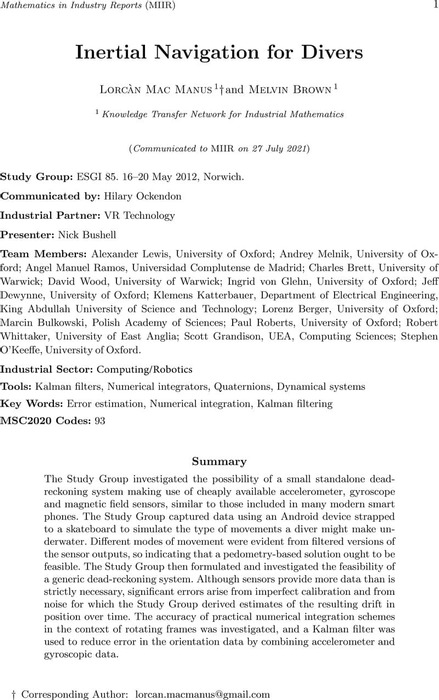Abstract
The Study Group investigated the possibility of a small standalone dead-reckoning system making use of cheaply available accelerometer, gyroscope and magnetic field sensors. The Study Group captured data using an Android device strapped to a skateboard to simulate the type of movements a diver might make underwater. Different modes of movement were evident from filtered versions of the sensor outputs, indicating that a pedometry-based solution ought to be feasible. The Study Group then formulated and investigated the feasibility of a generic dead-reckoning system. Although sensors provide more data than is strictly necessary, significant errors arise from imperfect calibration and from noise for which the Study Group derived estimates of the resulting drift in position over time. The accuracy of practical numerical integration schemes in the context of rotating frames was investigated, and a Kalman filter used to reduce error in the orientation data by combining accelerometer and gyroscopic data.
Content




